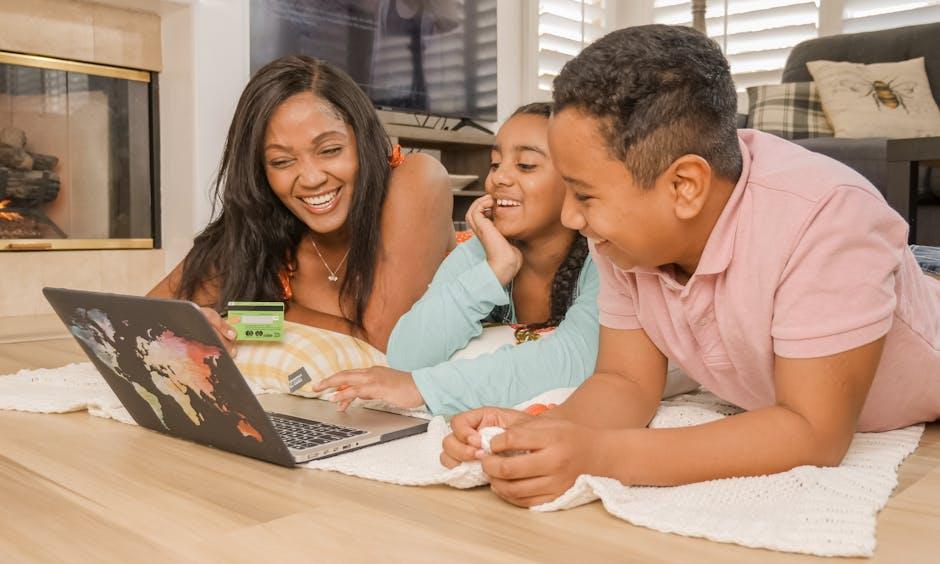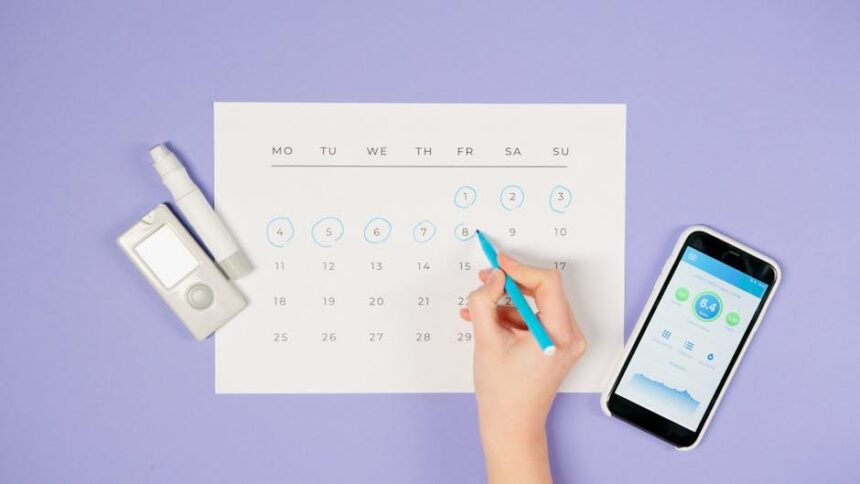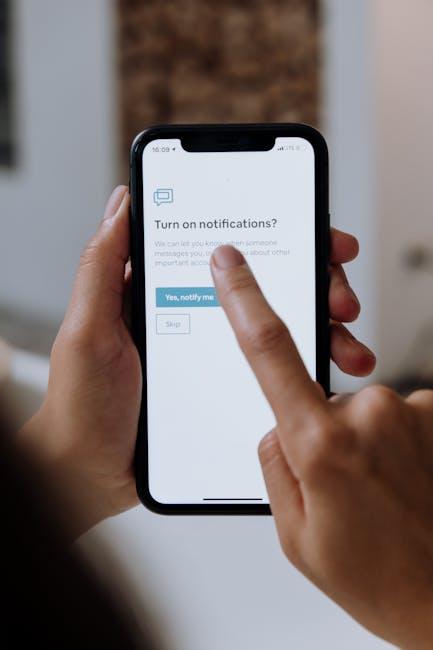In an age where screens are an integral part of daily life, managing children’s screen time can feel like navigating uncharted waters. The appeal of smartphones, particularly the iPhone, is undeniable, drawing kids into a digital world brimming with entertainment and learning opportunities. However, striking a balance between tech engagement and healthy habits is crucial for their development. By mastering iPhone screen time limits, parents can foster an environment that not only encourages responsible usage but also nurtures mental well-being. This article will explore effective strategies to set those boundaries, ensuring that technology enhances rather than hinders a child’s growth.
Understanding iPhone Screen Time Features for Effective Management
Managing screen time is crucial for promoting healthy habits among children in today’s tech-driven world. The Screen Time feature on iPhones provides parents with tools to monitor and limit their child’s device usage effectively. Here’s how these features can be utilized for optimal management:
- Daily Limits: Set daily usage limits for specific apps or categories such as Social Networking, Games, or Entertainment. This helps prevent excessive use.
- App Usage Monitoring: Access comprehensive reports on how much time your child spends on different applications. This insight can help in discussing healthy digital habits.
- Downtime: Schedule downtime during which only certain apps are accessible. For instance, block all but educational apps during homework or bedtime.
- Content & Privacy Restrictions: Control what content your child can access online, including explicit content and in-app purchases, ensuring a safe digital environment.
- Family Sharing: Use Family Sharing to manage your child’s screen time remotely and receive notifications when they reach their limits.
To set these features, follow these steps:
| Step | Description |
|---|---|
| 1 | Open the Settings app on your iPhone. |
| 2 | Select Screen Time. |
| 3 | Tap Turn On Screen Time if not already activated. |
| 4 | Choose options such as Downtime or App Limits to set specific restrictions. |
By strategically utilizing the iPhone’s Screen Time features, parents can foster a balanced approach to technology use, encouraging children to develop healthier habits while enjoying the benefits of digital resources.

Strategies for Setting and Customizing Limits Tailored to Your Child
Tailoring screen time limits to fit your child’s unique needs and habits can enhance their digital experience while promoting healthy habits. Here are some effective strategies to help you create a customized approach:
- Understand Your Child’s Routine: Consider your child’s school schedule, extracurricular activities, and family time. Setting limits that align with their daily life can help ensure that screen time becomes a positive addition rather than a distraction.
- Involve Your Child in the Process: Engage your kids in conversations about screen time. Discuss what they enjoy and why, and consider working together to set appropriate limits, which can lead to better acceptance and adherence.
- Use App-Specific Limits: Apple’s Screen Time feature allows you to set daily time limits for individual apps. For instance, if your child loves gaming, you can restrict it to one hour per day while allowing more time for educational apps.
- Schedule Downtime: Establish consistent downtime periods where all apps are inaccessible. This can encourage family interaction and reduce screen dependency. You might set screens off during meal times or before bed.
- Review and Adjust Regularly: Periodically review the set limits. As your child grows and their habits change, be open to adjusting the limits. Use the Screen Time reports to analyze app usage and make informed decisions.
- Incorporate Rewards: A reward system for adhering to screen time limits can motivate your child. Consider allowing extra screen time for completing homework or chores to encourage responsibility and positive behavior.
Setting up Screen Time limits is not just about restrictions; it’s about creating a balanced digital environment. Below is a sample table of potential limits tailored for different age groups:
| Age Group | Recommended Daily Screen Time | Suggested App Limits |
|---|---|---|
| 5-7 years | 1 hour | 30 minutes for games, 30 minutes for educational apps |
| 8-12 years | 1-2 hours | 1 hour for social media and games, 30 minutes for educational apps |
| 13-18 years | 2-3 hours | 1.5 hours for social media and games, 1 hour for educational apps |
By implementing these strategies, you can create a balanced approach to screen time that fosters healthy digital habits while allowing your child to enjoy their favorite activities responsibly.

Encouraging Alternative Activities to Balance Screen Time
As parents, striking the right balance between screen time and other activities is key to fostering healthy habits in children. Encouraging alternative activities not only reduces excessive screen use but also promotes a well-rounded lifestyle.
The following are some engaging alternatives that can captivate your child’s interest:
- Outdoor Play: Encourage activities like biking, hiking, or simply playing catch. Fresh air and physical activity can significantly boost mood and health.
- Creative Arts: Set aside time for painting, drawing, or crafting. These activities promote creativity and can be quite therapeutic.
- Board Games and Puzzles: Engage the whole family with board games or puzzles. These help develop critical thinking and problem-solving skills while fostering communication.
- Reading Together: Create a family reading hour. Reading not only improves literacy skills but also opens up conversations about different subjects.
- Cooking or Baking: Involve your kids in meal preparation. This fun, hands-on activity teaches valuable life skills and encourages healthier eating habits.
- Community Service: Encourage your child to participate in local charities or environmental clean-ups. This builds empathy and a sense of community.
Organizing a weekly schedule can be tremendously beneficial in balancing screen time:
| Day | Activity | Screen Time Allowed |
|---|---|---|
| Monday | Board Game Night | 1 hour |
| Tuesday | Arts & Crafts | 30 minutes |
| Wednesday | Outdoor Sports | 1 hour |
| Thursday | Reading Hour | 30 minutes |
| Friday | Family Cooking | 1 hour |
| Saturday | Volunteer Activity | 1 hour |
| Sunday | Family Movie Night | 2 hours |
By actively incorporating these alternatives into daily routines, you not only help your child reduce screen time but also nurture skills that will serve them well throughout life. Encourage exploration and creativity outside the digital world, and watch them thrive.

Creating Family Agreements for Healthy Digital Engagement
Creating family agreements for digital engagement is essential in fostering healthy habits around screen time. When family members align on technology usage, it sets a positive tone for digital interaction. Here’s how to create effective agreements that work for your household:
- Set Clear Expectations: Discuss what acceptable use looks like. Make sure everyone understands the rules about when and how long devices can be used.
- Involve Everyone: Include children in the conversation. Their input can lead to more buy-in on the rules created.
- Flexibility is Key: Life changes, and so can the need for digital engagement. Allow for the occasional adjustment of rules if the situation warrants it.
- Designate Tech-Free Zones: Establish areas of the home where screens aren’t allowed, like dining rooms or bedrooms, to encourage face-to-face interactions.
- Check-in Regularly: Schedule family meetings to revisit the agreement and make necessary updates, ensuring that all voices are heard.
Here’s a simple table structure that can help frame your family agreement:
| Agreement Item | Description | Consequences for Breach |
|---|---|---|
| Screen Time Limit | Each family member is limited to 1 hour of screen time during the week and 2 hours on weekends. | Loss of device privileges for consecutive breaches. |
| Content Guidelines | Approval required for any new apps or games. | Notification to parents if guidelines are not followed. |
| Tech-Free Meals | No devices during meal times to encourage family conversations. | Missing out on favorite activities for a week. |
Implementing these agreements not only cultivates better digital habits but also strengthens family relationships. Remember, consistent communication and a willingness to adapt are crucial in navigating the digital landscape as a family.

Concluding Remarks
As we wrap up our exploration of mastering iPhone screen time limits for kids, it’s important to remember that technology is a tool-one that can enhance learning and creativity when used mindfully. By setting clear boundaries and fostering open conversations about screen use, we empower our children to cultivate healthy habits that will serve them well into adulthood.
Embrace this journey as an opportunity to connect with your children, guiding them not just to manage their screens, but to engage deeply with the world around them. Armed with strategies and resources, you’re not only instilling discipline but also nurturing their potential to thrive in a balanced digital landscape. Here’s to healthier habits and happier families-one screen time limit at a time.














